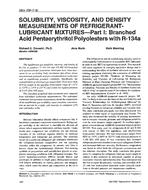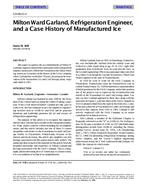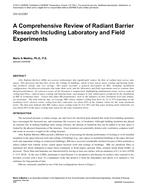Thermal comfort, like politics, is truly local. Similarly, comfort clearly reflects personal preferences, which also makes it difficult to quantify. Research has statistically quantified “comfort” according to experimental surveys of people working under various conditions. According to studies of actual office buildings, 1,2 a large portion of typical office occupants — about 40 out of every 100 — may be dissatisfied with their thermal work environment. Even a well-designed HVAC system leaves at least 10 out of every 100 occupants “too hot” or “too cold.”3 Microenvironment conditioning, also called taskambient conditioning, allows individuals to control the temperature in their personal space. This creates “microzones” with conditions tailored to the varying preferences of each occupant, presumably maximizing each person’s comfort.
Citation: ASHRAE Journal, vol. 45 no. 9, September 2003
Product Details
- Published:
- 2003
- Number of Pages:
- 2
- File Size:
- 1 file , 690 KB
- Product Code(s):
- D-18764


